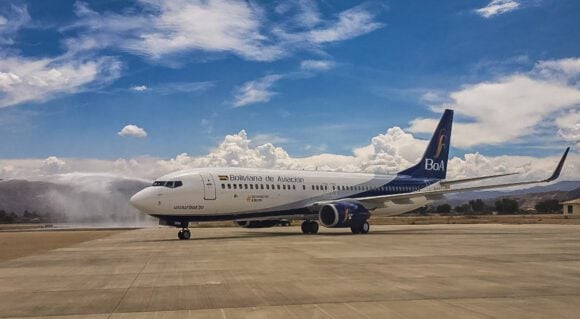
2024 09 13 10 22 19
PR: United today set a new standard of inflight connectivity by signing the industry’s largest agreement of its kind with SpaceX to bring Starlink’s fast, reliable Wi-Fi service to the airline’s mainline and regional aircraft fleet, for free.
United customers will soon enjoy the same high-speed, low-latency internet service in the air that they enjoy on the ground. The new, gate-to-gate connectivity will unlock game-changing experiences in the sky at scale that no other major U.S. airline provides like access to live TV and streaming services, social media, shopping, gaming and more, on seatback screens and personal devices simultaneously.
United expects to have Starlink on all United aircraft – more than 1,000 planes – over the next several years. Testing begins in early 2025 with the first passenger flights expected later that year.
Starlink service on United aircraft will be free.
Leveraging advanced satellites with its deep experience in both spacecraft and on-orbit operations, Starlink is engineered by SpaceX and delivers internet access around the world, including over oceans, polar regions and other remote locations previously unreachable by traditional cell or Wi-Fi signals. United is the largest airline across both the Atlantic and Pacific and will be the first carrier in the world to commit to offering Starlink service at this scale.
“Everything you can do on the ground, you’ll soon be able to do onboard a United plane at 35,000 feet, just about anywhere in the world,” said United CEO Scott Kirby. “This connectivity opens the door for an even better inflight entertainment experience, in every seatback – more content, that’s more personalized. United’s culture of innovation is, once again, delivering big for our customers.”
“We’re excited to team up with United Airlines to transform the inflight experience,” said Gwynne Shotwell, President and Chief Operating Officer at SpaceX. “With Starlink onboard your United flight, you’ll have access to the world’s most advanced high-speed internet from gate to gate, and all the miles in between.”
United’s new Starlink Wi-Fi service will include experiences like:
- Live streaming: access personal streaming services and watch live TV, shows and movies without buffering, lag or the need to download content in advance.
- Workplace productivity: download/upload documents and edit shared files in real-time.
- Gaming: play live games and follow along on live gaming streaming services.
- E-Commerce: shop online, schedule grocery delivery and make restaurant and travel reservations all from the comfort of your seat.
- Multiple devices: connect multiple devices at once, under one user.
- Live support with the United app: download the United app while inflight to get real-time info about connections and access customer support from a real agent through Agent on Demand.
In addition to using Starlink connectivity on personal devices, United customers also will have access on their seatback screens. United has nearly 100,000 seatback screens across its fleet, with plans to grow these numbers as the airline continues to take delivery of new airplanes and retrofit existing aircraft with its new United signature interiors. The inflight content is available in more than 20 different languages. The new United signature interiors include 16-inch HD touch screens in each United Polaris® business class seat, 13-inch screens in every United First Class seat and 10-inch screens in every United Economy seat. In addition to seatback screens in every seat, United’s new signature interior also includes Bluetooth connectivity, power in every seat, larger overhead bins with room for everyone’s rollaboard and LED lighting.
The new service will also benefit United’s frontline employees – United pilots, flight attendants, technicians and gate agents all use mobile devices to help run the operation and serve customers. As United rolls out the Starlink more broadly, it will give those teams the same rich capabilities in the air, as they have on the ground including when working in remote location or when traditional services might be impacted like during power outages or natural disasters.
This is pretty big news. In-flight Wi-Fi has been a poster child for over promise and under deliver. In the early days the excuse for poor connectivity was bandwidth, and the limited ability for pioneer GoGo to improve that from its ground stations. Moreover, once a flight was 100 miles offshore from the US, that was the end of the signal.
In-Flight Connectivity
Then came the satellite options, with a lot more bandwidth. Satisfaction improved considerably as every passenger could get some sort of communication working. ViaSat became the go-to for airlines. And it is good, when you can connect. The picture below is taken from a Delta flight that utilizes the ViaSat signal.

It did not help that your correspondent was flying in the dark patch south of the Equator over the Atlantic.
The Starlink solution looks like opening up more connectivity. Their numbers look good.


The decision to deploy Starlink at United looks like being a great move. It will put pressure on competitors to “up their game’, which is always a good thing.
Crucially, this move by United follows a host of recent technology improvements. It will be interesting to see market reaction to these improvements, which we can expect to see in US DoT filings by year end.
Views: 5




